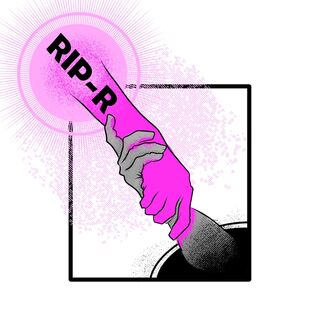OCD
Can This New OCD Treatment Help Where Others Fall Short?
Learn about a brand-new therapy that might make a huge difference.
Posted December 18, 2020 Reviewed by Jessica Schrader

Ten years ago, I was struggling with severe OCD. I had already been to numerous therapists and even underwent a three-week intense exposure and response prevention (ERP) treatment with a brilliant OCD specialist. All of this time and money spent, only to find myself doing compulsions from the moment I awoke until I went to sleep at night. I was trapped, my brain was locked; and since no therapy had worked, I was beyond terrified that I would never be free.
I wanted desperately to feel and act like my non-OCD counterparts. I prayed and tried as hard as I could, but was not able to stop the compulsions. The scariest part was knowing that I was a very strong person and yet, I was unable to change my behaviors. I thought, “Wow, if ERP didn’t work on me, then what will? Am I just going to be like this forever?”
This was a scary and helpless place to be in. Then, in the late evening of Aug. 7, 2010, something happened—an event that pushed me to my personal “rock bottom.” Although it appeared as a horrible event that devastated me, it turned out to be the best thing that could have happened. Finally, actual reality was able to break through my obsession with infection. Finally, I was presented with a scenario that seemed scarier to me than my fear of contamination. That was the night that changed me. I was driven and charged in a way that I had not been in all the years I was caught in OCD hell. The next part, resisting compulsive behaviors, did not seem that difficult. Granted, it was still highly uncomfortable, yet, all of a sudden doable.
This was when the therapy I call RIP-R was born—the therapy that saved my life. RIP-R is a cognitive-behavioral approach that restructures and corrects the parts of ERP that fell short for me.
I will start by saying that I am a huge ERP advocate: I have personally and professionally witnessed the power of ERP and how it truly helps the sufferer. I came to realize that while ERP is an excellent treatment plan, it does not include any assessment measures for a sufferer’s level of motivation.
I believe it is critical to determine how ready a client is to change their strong habits prior to beginning a desensitization process. Meaning, a client might not be highly motivated and most therapists will quickly begin “exposing," thereby possibly leading clients to do more compulsive behaviors. In turn, this potentially makes the habit stronger and the OCD worse. This was what happened to me (please see my post, “Why Exposure and Response Therapy Did Not Work for Me”).
Also, RIP-R is designed to be fluid, in the sense that a person could lose their feeling of drive and inspiration when they are in the “P” or practice phase; then, the clinician would want to pause and go back to the rock-bottom phase.
RIP-R corrects this. The “R” stands for rock-bottom. Rock-bottom is a metaphor; everyone’s “rock-bottom” is different. It comes down to a matter of perspective; my rock-bottom might be different from yours. This phase of treatment symbolizes a sufferer’s need to be fully driven before they can begin resisting their compulsive behaviors.
I firmly believe all sufferers need a “reason," a “calling," or an “event” that really shakes and pushes them to their personal bottom. A place where they feel that they cannot live this way anymore or feel that they have had enough of all the “bullsh*t.” Once, a sufferer is correctly driven, I believe 99% of the problem is taken care of.
In RIP-R therapy, there are five “drive builders” that a client needs to process and review. The purpose of this is to push a client into “rock bottom” if the environment has not already done it for them.
Moving on to the “I,” which stands for interruption. This is the second phase of RIP-R and involves interrupting or reducing compulsions. While the concept of response prevention is powerful in ERP, preventing all responses is not a goal in RIP-R. To become "OCD recovered" means that a sufferer will behave like the non-OCD population. The average non-OCD person will do a certain amount of compulsions, but they are typically just enough behaviors to keep themselves “well.” Their behaviors are usually controlled. For example, if a sticky substance got on the hands of two individuals, the non-OCD person would be fine with a quick hand wash to get the goo off. The OCD individual could keep washing for an extreme length of time trying to eliminate all doubt in their mind that the substance is off. Then, they could stop washing, still feel “sticky,” and start washing again. This person would want to reduce or interrupt washing behavior to be within the length of time as the first individual.
In order to provide a sufferer with a game plan or a specific strategy to do this, RIP-R utilizes 10 unique and innovative cognitive manipulators. These are cognitive “tricks” designed for the sufferer to learn and then practice and practice and practice. They are intended to help the sufferer strengthen their “weak thoughts” enough to battle the obsessive thoughts; thereby, helping them resist the compulsions. Clients then practice the manipulators all day, every day, over and over again; while always interrupting and controlling compulsive behaviors until they reach their goal of behaving like the non-OCD population. Then, they are considered to be in “OCD recovery."
Finally, the last phase, replacement: The sufferer is taught how to take all the time and energy they spent on their unproductive, unnecessary compulsive behaviors, and channel that compulsive energy into useful and productive behaviors—behaviors that will provide some benefit to either themselves or those around them. As an example, when a person does not feel the need to spend six hours a day checking their electrical appliances, they may put that energy into spending more time with their friends and family, volunteering, or exercising.
To find a therapist, please visit the Psychology Today Therapy Directory.




